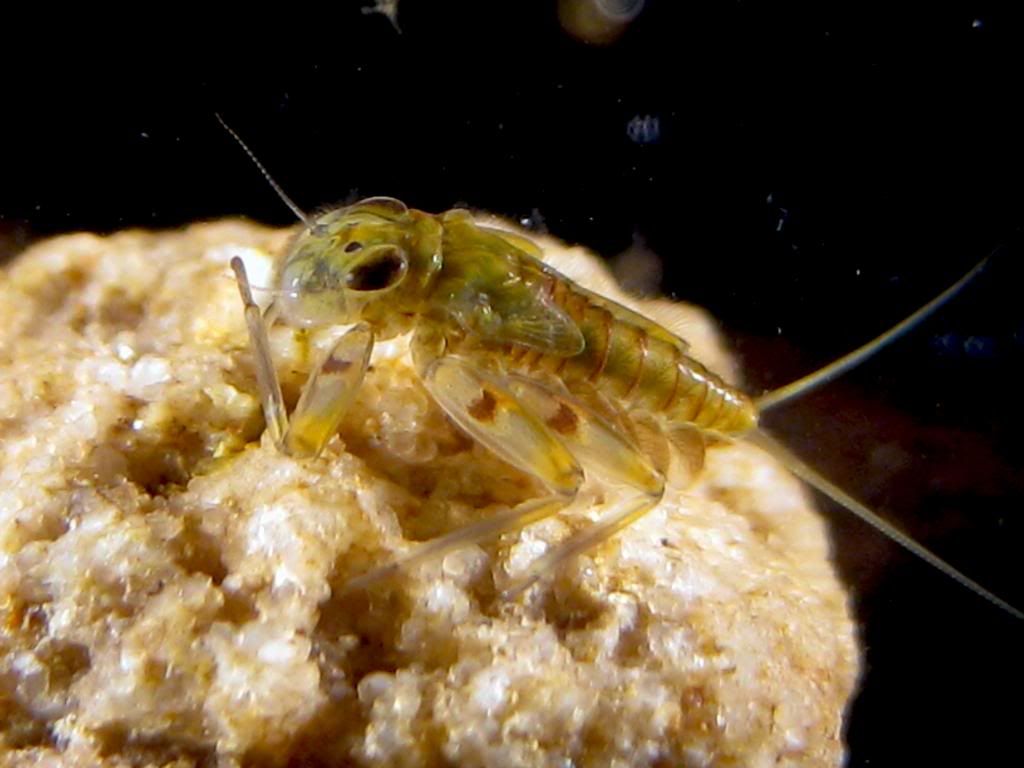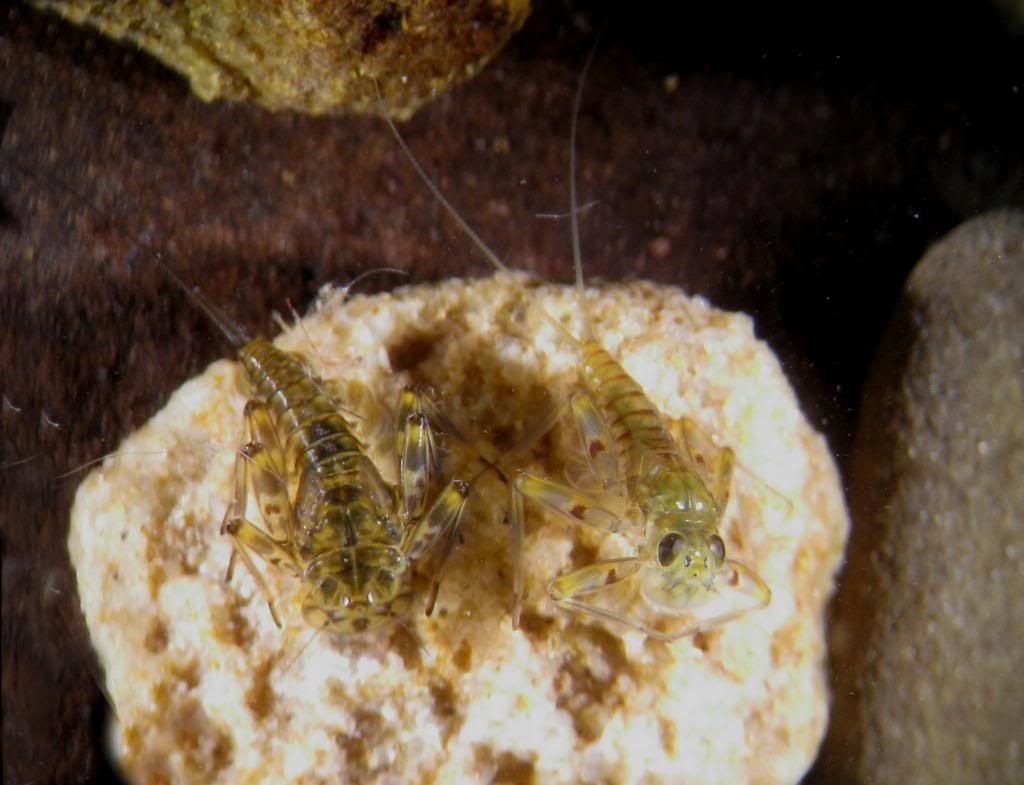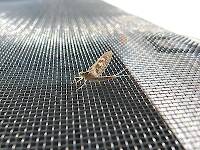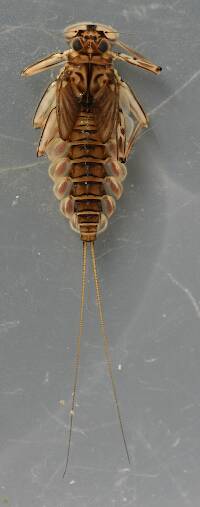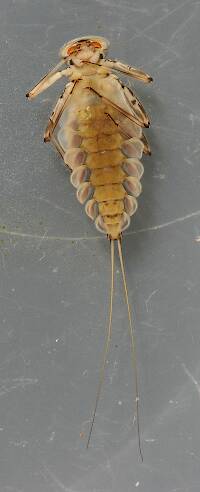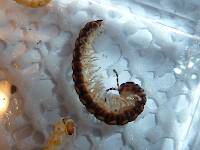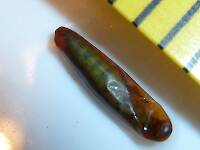
Hex Mayflies
Hexagenia limbata
The famous nocturnal Hex hatch of the Midwest (and a few other lucky locations) stirs to the surface mythically large brown trout that only touch streamers for the rest of the year.
Featured on the forum

Troutnut is a project started in 2003 by salmonid ecologist Jason "Troutnut" Neuswanger to help anglers and
fly tyers unabashedly embrace the entomological side of the sport. Learn more about Troutnut or
support the project for an enhanced experience here.
Crepuscular on Feb 25, 2013February 25th, 2013, 8:52 am EST
I don't think it's E. vitreus. I know you can't see it in the original photo but gill 1 is not right for E. vitreus. The anterior portion is elongated.
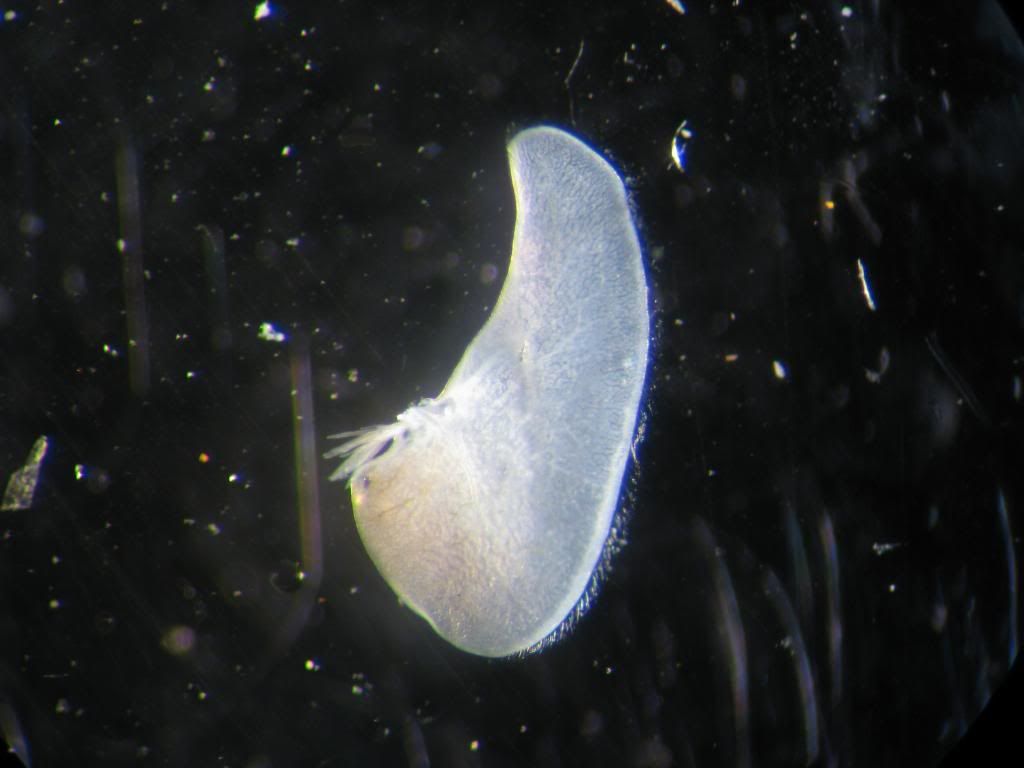
but i will defer to the experts. Another example of why making identifications from photos that do not show all the characters needed to make a positive identification is risky business.

but i will defer to the experts. Another example of why making identifications from photos that do not show all the characters needed to make a positive identification is risky business.
Entoman on Feb 25, 2013February 25th, 2013, 12:35 pm EST
The head capsules can tell a lot sometimes. I was leaning towards E. pleuralis (Gordon Quill) and definitely felt it was at least in the species group. E. vitreus (Yellow Quill) is in a different group and its head is slightly conical at the anterior with the the corners less rounded. The lateral margins are less angled inward as well, so the eyes don't crowd the posterolateral margins or even overlap them as in the pleuralis group. It's also lacking the three bars anteriorly as is typical of vitreus but does show the indistinct V shaped mark of pleuralis.
The gill confirms the species group and also precludes fragilis (the other species in the group known for PA). It's the lack of a dark sclerotized strip running through it. I think it's safe to say it's pleuralis. Unless of course, I'm wrong.:)
Perhaps the best example of the heart shaped femoral marks I've seen on a nymph. Great shots and posing, Eric. I hope you don't get sick of hearing it because you will... A lot! It seems a little prepubescent bonding is going on there. Is it possible that Epeorus species arrange the marriages of their children?;)
The gill confirms the species group and also precludes fragilis (the other species in the group known for PA). It's the lack of a dark sclerotized strip running through it. I think it's safe to say it's pleuralis. Unless of course, I'm wrong.:)
Perhaps the best example of the heart shaped femoral marks I've seen on a nymph. Great shots and posing, Eric. I hope you don't get sick of hearing it because you will... A lot! It seems a little prepubescent bonding is going on there. Is it possible that Epeorus species arrange the marriages of their children?;)
"It's not that I find fishing so important, it's just that I find all other endeavors of Man equally unimportant... And not nearly as much fun!" Robert Traver, Anatomy of a Fisherman
Crepuscular on Feb 25, 2013February 25th, 2013, 1:14 pm EST
That's what I keyed it out to Kurt. Maybe just recently molted?
Entoman on Feb 25, 2013February 25th, 2013, 1:49 pm EST
Yep, that's what I think. It could be the substrate or possibly even the instar stage, I suppose. Perhaps even a little of all three.:) The one on the left sure is heavily maculated for an Epeorus. It also looks like it has eyes on the pronotum as well. How weird is that? Speaking of instars, what size are they? their proportions look like they have a way to go.
Live heptageniid photos sure are nice to work with... The dead ones usually drop their heads and make it a lot tougher. Again, great job.
Live heptageniid photos sure are nice to work with... The dead ones usually drop their heads and make it a lot tougher. Again, great job.
"It's not that I find fishing so important, it's just that I find all other endeavors of Man equally unimportant... And not nearly as much fun!" Robert Traver, Anatomy of a Fisherman
Crepuscular on Feb 25, 2013February 25th, 2013, 3:07 pm EST
They both came from the same riffle t the same time. The lighter colored one is about 7.5 mm.
Quick Reply
Related Discussions
Topic
Replies
Last Reply
0
Oct 24, 2006
by Troutnut
by Troutnut
1
Oct 28, 2008
by GONZO
by GONZO
4
Dec 22, 2009
by Oldredbarn
by Oldredbarn
7
May 9, 2012
by Entoman
by Entoman
1
Oct 19, 2006
by Troutnut
by Troutnut




